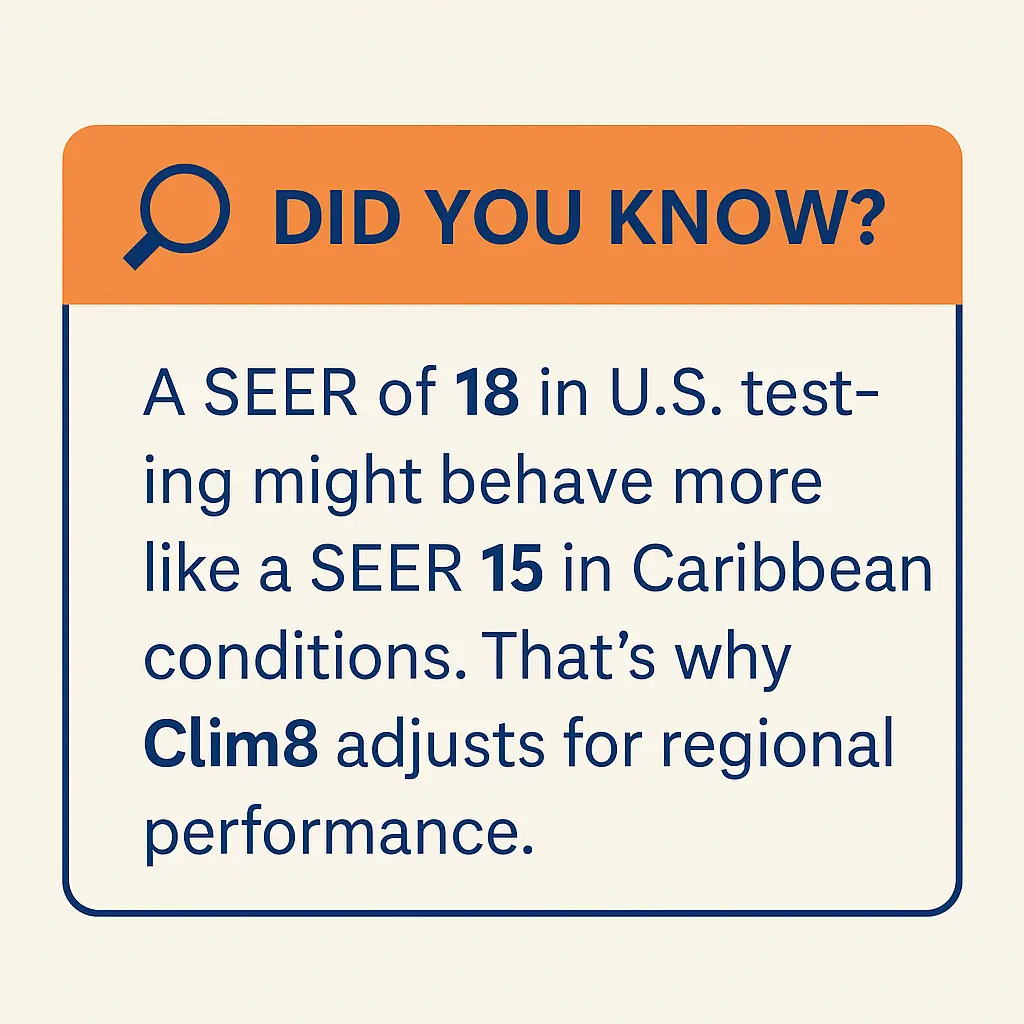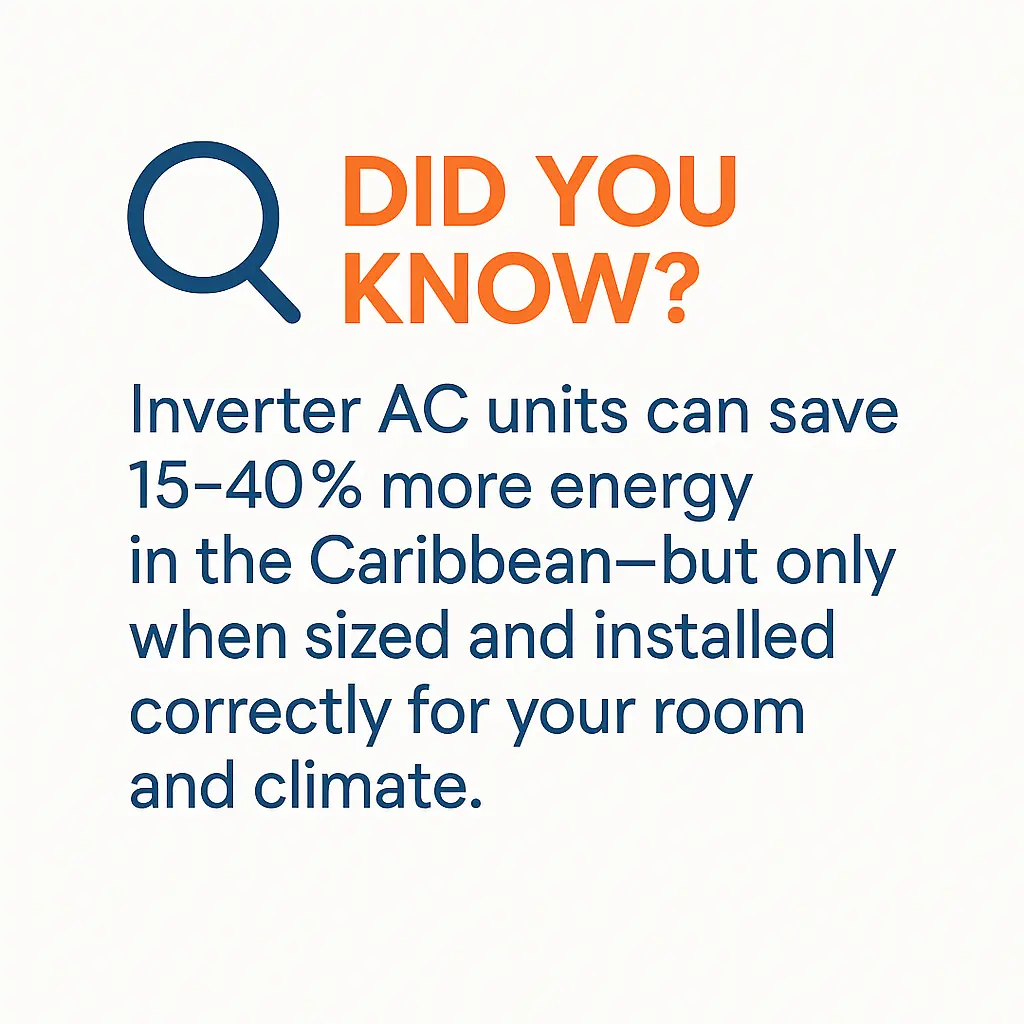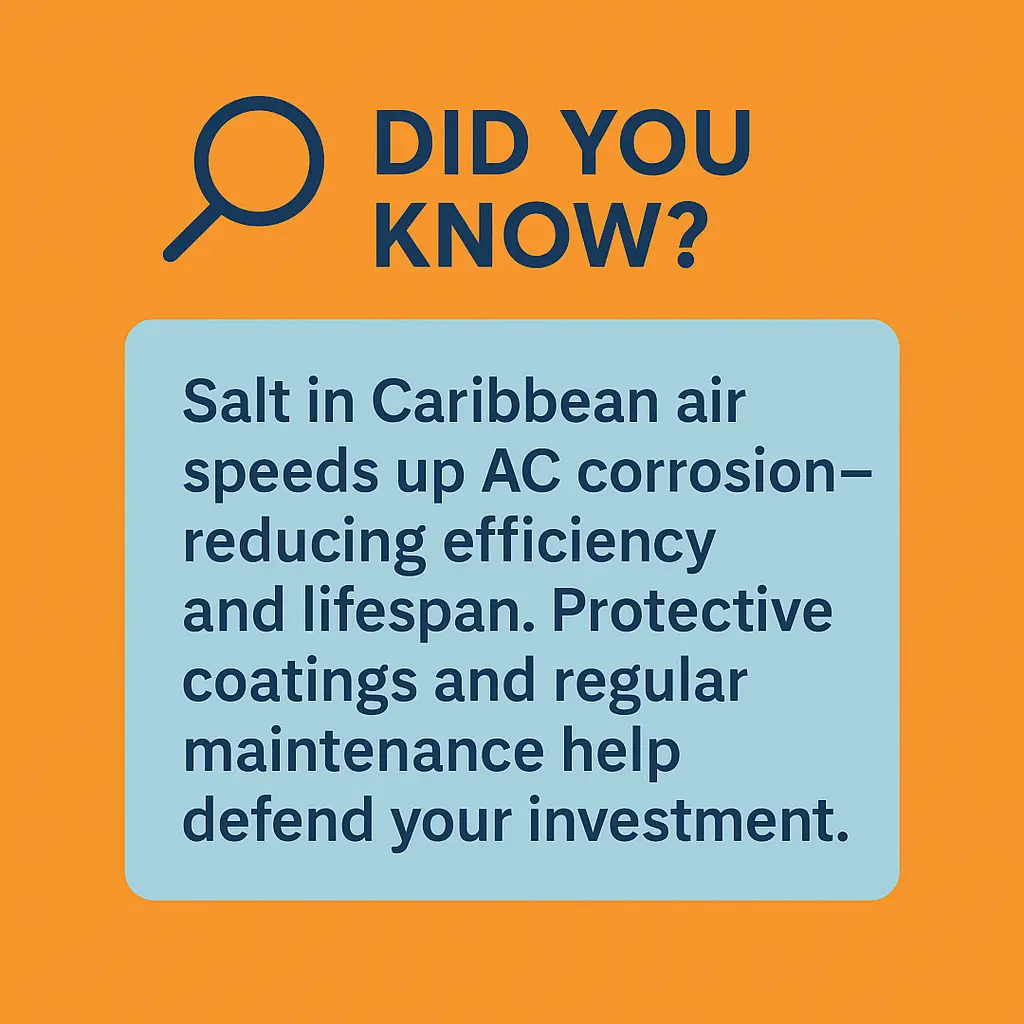When shopping for an air conditioner, you’ll often hear about SEER, EER, and the newer SEER2 ratings. These metrics are meant to guide smart decisions—but are they truly applicable to Caribbean homes and businesses? In a region defined by consistent heat, high humidity, and year-round AC use, it's worth asking: do these efficiency ratings tell the full story?
What Are SEER, EER, and SEER2?
- SEER (Seasonal Energy Efficiency Ratio): Measures total cooling output during a U.S. cooling season divided by energy consumed. It assumes varied usage across cool and warm periods.
- EER (Energy Efficiency Ratio): A simpler metric measured at a fixed outdoor temperature (95°F), representing a snapshot of how much cooling is provided per unit of energy.
- SEER2: Introduced in 2023, SEER2 uses higher external static pressure during testing to better reflect real-world HVAC conditions. It’s more accurate than traditional SEER for U.S. homes—but it still doesn’t fully account for Caribbean realities like humidity, salt air, and constant use.
These metrics help customers compare systems—but they are all based on temperate climate assumptions and controlled test environments that may not reflect actual performance in the Caribbean.
Why They Fall Short in the Caribbean
In Dominica and across the Caribbean, air conditioners operate nearly year-round—but patterns do shift. From June to November, the rainy (and hurricane) season may drive up humidity, causing AC units to work harder for dehumidification. While temperatures may dip slightly in December and January, cooling needs don’t disappear entirely—especially in commercial and coastal spaces. These months do tend to bring a dip in AC usage—and AC sales.
The majority of Caribbean communities lie within 1–5 kilometers of the sea. This proximity to the ocean results in consistently warm, humid, and salt-exposed environments—factors that U.S.-based SEER and EER testing conditions don’t reflect.
How This Impacts You
- SEER May Overpromise: A unit rated SEER 18 may not deliver those savings in Dominica if used daily in high humidity.
- EER Is More Stable—but Still Incomplete: While measured under fixed conditions, it doesn’t capture how inverter technology behaves in real-time.
- High Humidity Isn’t Calculated: The energy needed to remove moisture is often more than to remove heat. SEER doesn’t reflect this burden.
What Clim8 Recommends
- Treat SEER and EER as starting points—not decision-makers.
- Choose inverter-based systems, which adapt to real-time load and save more in high-use environments.
- Work with local HVAC partners who consider room volume, solar gain, people, and your community’s microclimate.
- Use Clim8’s Comfort Calculator, which adjusts BTU estimates for tropical loads and gives more realistic energy cost estimates.
Final Word
SEER and EER have value, especially for comparison—but they weren’t designed with the Caribbean in mind. When precision, comfort, and cost matter, local insight beats imported theory.
Clim8 uses tools and practices rooted in Dominica’s lived climate, empowering smarter choices for your family or business.
Want more accurate insight before you invest? Try our Comfort Planner Calculator for a Caribbean-adjusted BTU and electricity cost estimate—built on real island data.


